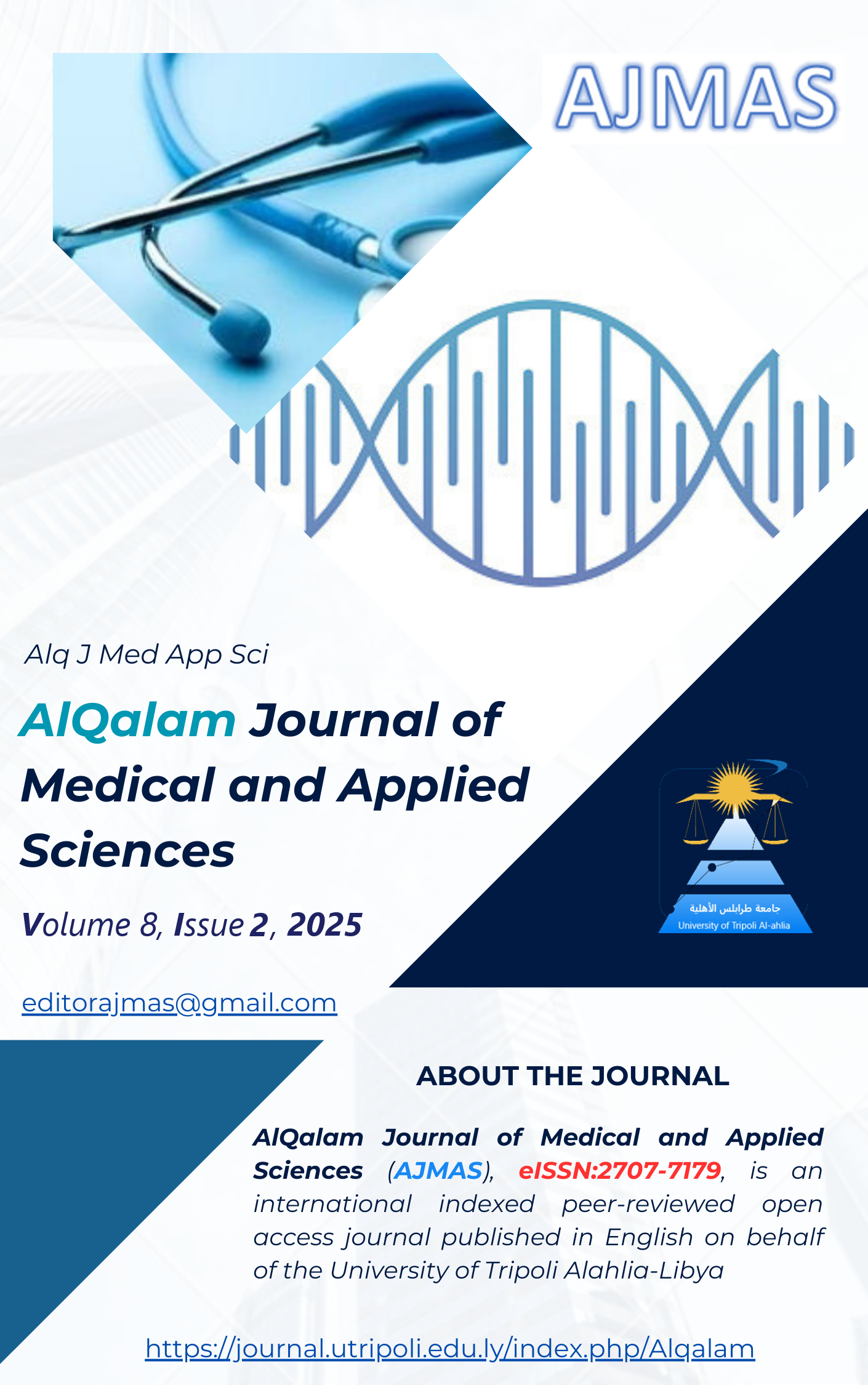The Radiation Dosimetry of 68Ga in PET Imaging: Impact of Exposure Pathways and Age on Effective Dose and Organ-Specific Coefficients
DOI:
https://doi.org/10.54361/ajmas.258218Keywords:
Organ-Specific Dose Coefficients, FGR13_DB, Gallium-68 (68Ga), Radiopharmaceuticals.Abstract
The study investigated Positron Emission Tomography (PET), a diagnostic imaging technique employed in healthcare to evaluate physiological functions and detect abnormalities. It emphasized concerns regarding radiation dosimetry and potential risks, advocating for an evaluation of radiopharmaceuticals such as Gallium-68 (68Ga) to prioritize patient safety and prevent radiation exposure. The study determined effective doses and organ-specific dose coefficients, utilizing data from the Federal Guidance Report No. 13 Database (FGR13_DB) and the International Commission on Radiological Protection (ICRP) database, for 68Ga radiopharmaceutical employed in PET imaging, encompassing both internal and external exposure pathways. Younger individuals exhibited greater susceptibility to the effects of radionuclides, with internal exposure leading to significantly higher radiation doses. Consequently, incorporating age-specific coefficients is crucial when assessing the effects and risks associated with radiation exposure. The dose coefficients for 68Ga exhibited variability depending on the exposure scenario. Furthermore, the organs exhibiting the highest sensitivity to radiation were determined based on the specific exposure scenario. For external exposure, the skin, breast surface, and testes were the organs most susceptible to radiation. Regarding internal exposure, the stomach wall and small intestine wall were the organs most affected by ingestion, while the esophagus, stomach wall, and small intestine wall exhibited the highest sensitivity to radiation exposure via inhalation. Concerning the effective dose, it was found that the effective dose is higher when exposure is through ingestion or the dietary route. The collected specific data of dose estimates is important for characterizing patient doses, and specific dosimetric information assists in establishing the risk and optimization of PET.
تناولت الدراسة التصوير المقطعي بالإصدار البوزيتروني وهو تقنية تصوير تشخيصي تُستخدم في مجال الرعاية الصحية لتقييم الوظائف, الفسيولوجية والكشف عن التشوهات. وشددت الدراسة على المخاوف المتعلقة بقياس جرعات الإشعاع والمخاطر المحتملة، داعيةً إلى تقييم المستحضرات الصيدلانية المشعة مثل الغاليوم-68 ( (68Ga لإعطاء الأولوية لسلامة المرضى ومنع التعرض للإشعاع. وحددت الدراسة الجرعات الفعالة ومعاملات الجرعة الخاصة بكل عضو، باستخدام بيانات من قاعدة بيانات تقرير التوجيه الفيدرالي رقم 13 (FGR13_DB) وقاعدة بيانات اللجنة الدولية للحماية من الإشعاع، للمستحضرات الصيدلانية المشعة 68Ga المستخدمة في التصوير المقطعي بالإصدار البوزيتروني، شاملةً مسارات التعرض الداخلي والخارجي. أظهر الأفراد الأصغر سنًا قابلية أكبر لتأثيرات النويدات المشعة، حيث يؤدي التعرض الداخلي إلى جرعات إشعاعية أعلى بكثير. وبالتالي، يُعد دمج المعاملات الخاصة بالعمر أمرًا بالغ الأهمية عند تقييم الآثار والمخاطر المرتبطة بالتعرض للإشعاع. وقد أظهرت معاملات الجرعة للغاليوم-68 تباينًا تبعًا لسيناريو التعرض. علاوة على ذلك، تم تحديد الأعضاء الأكثر حساسية للإشعاع بناءً على سيناريو التعرض المحدد. بالنسبة للتعرض الخارجي، كان الجلد وسطح الثدي والخصيتين الأعضاء الأكثر عرضة للإشعاع. أما بالنسبة للتعرض الداخلي، فكان جدار المعدة وجدار الأمعاء الدقيقة الأعضاء الأكثر تأثرًا بالابتلاع، بينما أظهر المريء وجدار المعدة وجدار الأمعاء الدقيقة أعلى حساسية للتعرض للإشعاع عن طريق الاستنشاق. وفيما يتعلق بالجرعة الفعالة، وُجد أن الجرعة الفعالة تكون أعلى عند التعرض عن طريق الابتلاع أو عن طريق الغذاء. تُعد البيانات المحددة المجمعة لتقديرات الجرعة مهمة لتوصيف جرعات المرضى، كما يساعد تكوين قياس الجرعات المحدد في تحديد مخاطر التصوير المقطعي بالإصدار البوزيتروني وتحسينه
Downloads
Published
How to Cite
Issue
Section
License
Copyright (c) 2025 Jemila Mussa, Abdulwahhab Elkuwafi, Mofeda Jabr

This work is licensed under a Creative Commons Attribution 4.0 International License.














